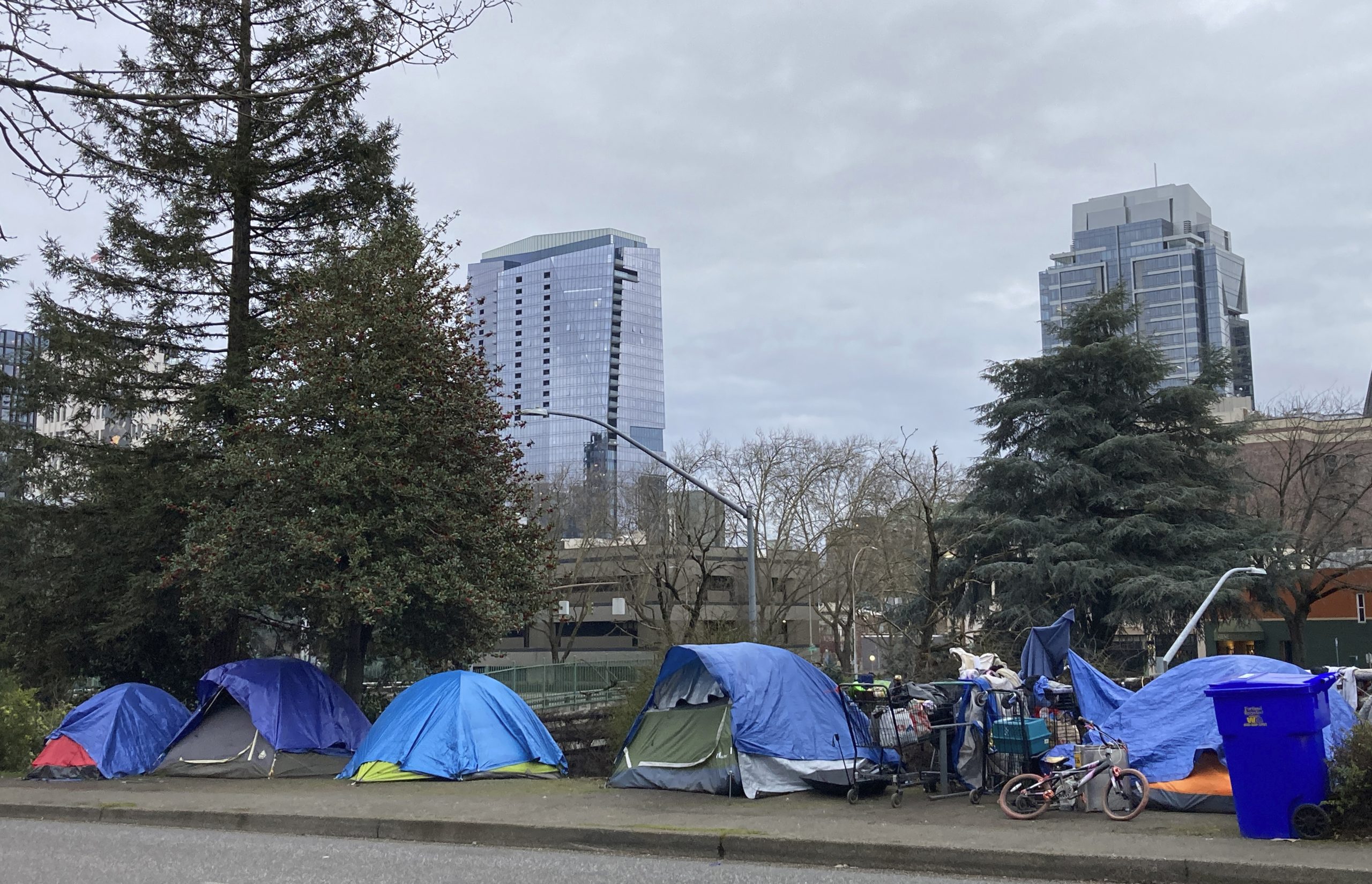The Portland, Oregon, area is taking Section 8 housing applications for the first time in seven years, but residents are concerned it will do little to stem the expanding homelessness crisis.
Multnomah County, where Portland is situated, will open its housing choice voucher program, commonly known as Section 8, to new applicants from Monday to Friday, which is administered by the public housing authority Home Forward.

ESG EMERGES AS SLEEPER ISSUE IN THE 2024 PRESIDENTIAL CAMPAIGN
Home Forward, which receives $84.9 million per year from the Department of Housing and Urban Development to administer the program in the area, is expecting to be inundated with over 20,000 applications (up from 16,000 seven years ago) to secure a spot on the waitlist to enter the lottery. Of those, 2,000 applicants will be selected.
After securing a spot on the waitlist, it can take months to years for someone to receive a voucher. Home Forward spokeswoman Monica Foucher told the Washington Examiner that the five-day application window is being opened after seven years because her organization is nearing the end of its previous waitlist.
The federally assisted program subsidizes housing rent payments, allowing families to pay a percentage of the full-price rent based on their income. The voucher program enables the resource to follow the family so they can move and maintain their assistance.
“This is great news for our low-income Portlanders and families,” Portland trial attorney Kristin Olson told the Washington Examiner. “I’m thrilled for anyone who is able to receive assistance through Section 8, and I am glad that it is finally open again.”
While the assistance is expected to help struggling families, Olson said the program would do little to quell Portland’s homelessness crisis. Between 2020 and 2022, the state of Oregon saw one of the country’s largest spikes in homelessness, increasing 23% over two years compared to the less-than-1% national average.
“It probably will not assist any noticeable amount of our unsheltered homeless population, which is what most people in Portland are focused on,” she said. “The people living in open-air drug markets on the sidewalks in Portland are in severe mental health crises and end-stage addiction and are not capable of working or making any sort of income that could go towards Section 8 housing.”
Oregon has the second-highest rate of substance use disorder in the country and sees about two opioid overdose deaths per day.
Applicants must meet certain criteria in order to be one of the 2,000 selected for the waitlist. Some of those criteria include persons aged 18 years or older, with some exceptions, whose incomes are at or below 50% of the median income for Multnomah County, which sits at $39,500 for an individual applicant and $56,400 for a family of four.
Olson says the city could do much more to fix the homelessness problem, which may help people get into the kind of shape where they could meet the voucher criteria.
Multnomah officials are flush with cash that is supposed to be spent on homeless services. According to OregonLive, the county failed to spend $43 million in the first nine months of this fiscal year and was projected to receive an additional $25 million for homeless services.
CLICK HERE TO READ MORE IN THE WASHINGTON EXAMINER
Portland Mayor Ted Wheeler called for the additional funds to be put toward a mass alternative shelter site, which was originally planned to be a big tent city until Gov. Tina Kotek (D-OR) approved the site on the condition that the city had to provide something safer than tents.
“The most bizarre thing about the unsheltered homeless crisis in Portland is that money is not an issue,” Olson said. “This is one of the only counties in the United States that doesn’t have to worry about money and can do virtually whatever it wants. But it refuses to admit that the people lying on the sidewalks need intervention and that the unsheltered homeless crisis isn’t a housing issue — this is a drug and mental illness crisis.”





